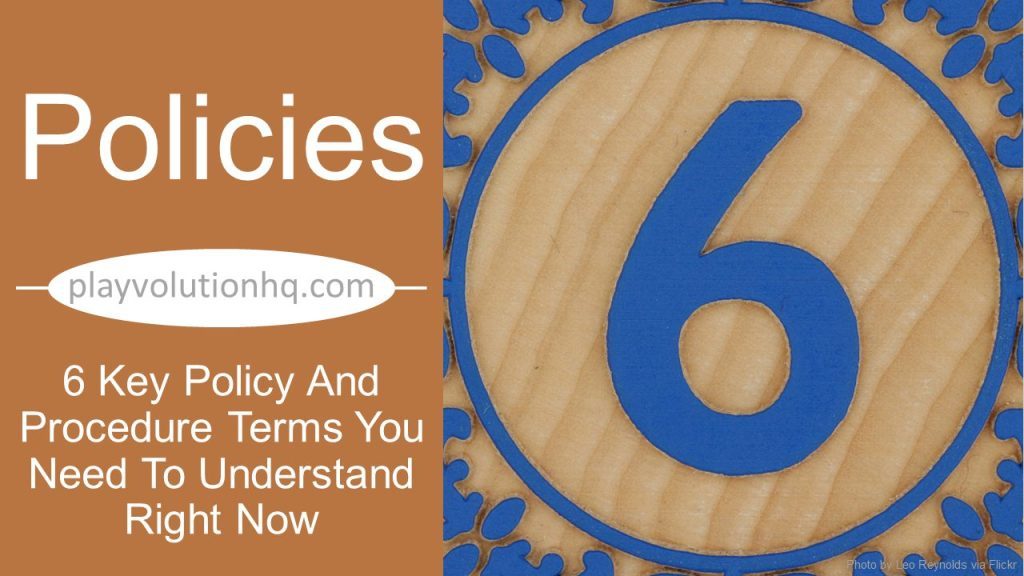
Understanding the difference between these 6 key policy and procedure terms makes policies and procedures easier to write, understand, and implement. For example, the terms Policies and Procedures frequently are used interchangeably when they have distinct meanings–as you will see below.
The 6 Key Policy And Procedure Terms
Here are the 6 key policy and procedure terms:
Policies
A Policy is a clear statement of position on a given subject. Policies document guiding rules and principles. They are intended to help steer an organization and provide consistency and continuity. Policies help caregivers, parents, and children know what to expect in different situations. Procedures grow from policies.
Procedures
A Procedure documents how a policy is implemented. Procedures are policies in action. They explain “the way things are done around here.” Policy topics range widely. Some must be implemented rigorously, and others must be best enacted with abundant flexibility. They should be written accordingly. Below are four style options, each with examples of when it is likely the best option.
Each of the final 4 of the 6 key policy and procedure terms refers to a style in which a procedure may be written. They vary in both their structure and in the amount of flexibility they allow.
Declarations
Declarations are used to share information. For example, a Closings Policy may include a statement about how weather-related closings are communicated to parents and a list of holidays the program closes for. Other examples include hours of operation, staff-to-child ratios, and what supplies infants should have on hand. These usually consist of a few short paragraphs.
Guidelines
A Guideline is a broad recommendation intended to direct actions and decision-making. Guidelines are malleable and highlight best practices. Guidelines offer structure and flexibility. They are ideal for guiding how a program deals with things like mud play, clean-up time, or rough and tumble play. They are also usually written in paragraph form but are longer and more detailed than Declarations.
Instructions
Instructions describe how to deal with specific tasks or situations. They offer more structure than guidelines but are not as exacting as protocols. For example, instructions are ideal for explaining how to request a day off, make a tuition payment, or lock the building at the end of the day. These should include lists of numbered steps.
Protocols
A Protocol is an exact set of instructions that must be followed to complete a specific task to assure quality, safety, or compliance. Licensing regulations often dictate protocols. For example, there may be a protocol for changing diapers, administering medication, or reporting suspected child abuse. These should include lists of numbered steps, possibly with headings and sub-headings.
Wrap Up
Understanding these 6 key policy and procedure terms is vital for creating clear and concise policies and procedures for your early learning setting.
You’ll find a free handout with this information here.
Related Policy And Procedure Forms And Handouts


Contribute content to Playvolution HQ
Brought to you by Explorations Early Learning
Post Author
Jeff Johnson is an early learning trainer, podcaster, and author who founded Explorations Early Learning, Playvolution HQ, and Play Haven.

Leave a Reply